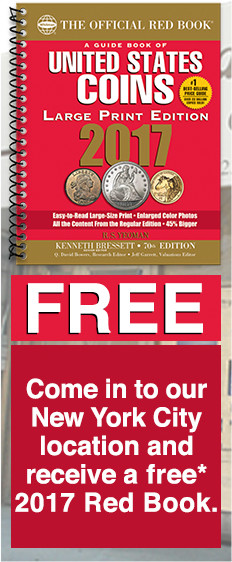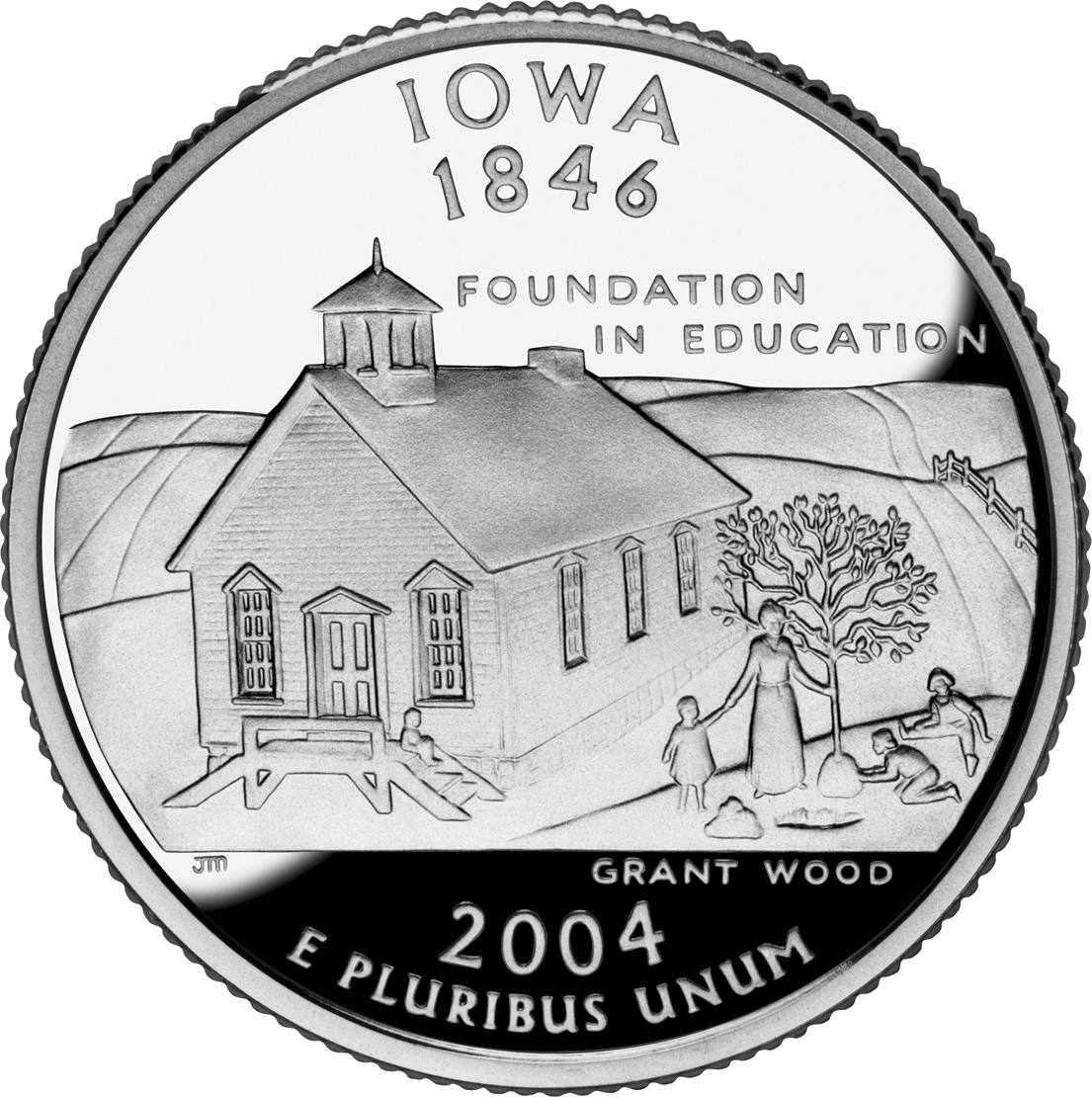Value of 2004 Iowa State Quarter
Approximate Current Value: $0.25
Price Guide and Information for 2004 Iowa State Quarters
2004 Iowa State Quarter History
The obverse of the 2004 Iowa State Quarter shows the standard Washington Quarter design with a few alterations. The Washington Quarter, that ran from 1932-1998, had the date on the obverse, as well as the word “Liberty.” This design was changed slightly with the introduction of the State Quarters, and later the Territory Quarters and National Park Quarters. The new design still shows Washington looking left, however the obverse text now reads “United States of America – Liberty – In God We Trust – Quarter Dollar.” The reverse of this coin depicts a painting by the artist Grant Wood. If you recall, Grant Wood was well known for his painting called “American Gothic” which depicted a farmer and his wife outside their house. This painting used on the coin was done in a similar style, and it shows what appears to be a school house. This painting was called “Arbor Day”. The minter used this coin to represent the small-town values found in Iowa, as well as their dedication to education. In 2002, Governor Thomas Vilsack set up a committee in Iowa that was composed of 16 members to advise the Governor on the design of the 2004 quarter series. However, that number was later reduced to just 13 members. Tom Robertson and Brian Fanton were two of the members, who also happened to be local numismatists. The citizens of Iowa submitted just over 5,000 ideas for the design. The ideas were narrowed down to about five themes. These five included “American Gothic,” “Foundation in Education,” “Feeding the World,” “Sullivan Brothers,” and “The Beautiful Land.” Some disagreements came from the final five designs. The Sullivan brothers were heroes in Iowa for going down with their sinking ship. However, many people pointed out that they had previously served time and were not good men. Other concepts just flat out didn’t make sense, so the Governor contact a Mint supply company and commissioned a “Foundation in Education” design. To incorporate Grant Wood into the design, the school house shown was a painting done by Wood. A lot of the elements of the painting were left out or modified, which frustrated some of the artistic types that were viewing it. This is the first time that a design has featured the name of the artist so prominently on the reverse of the coin. This was the 29th coin released in the Statehood Quarters program. The reverse text of the coin reads “Iowa 1846 – Foundation in Education – Grant Wood – 2004 – E Pluribus Unum.” All of the Statehood Quarters were clad, meaning that they were seventy-five to eighty percent copper, and the rest was composed of nickel. The core of the coins were solid copper. These coins, however, were produced in silver for special Silver Proof Sets. The coins minted in included Michigan, Florida, Texas, Iowa, and Wisconsin
Errors on the 2004 Iowa State Quarter There are currently no known errors of this coin. If you ever run across anything that looks unusual with the Iowa State Quarter, please contact one of our experts to have the error verified, or send the coin to a professional grading company for their opinion. However, the average circulation State Quarter is only worth the face value of $0.25. These coins can be spent, saved, or taken to the bank.
Varieties on the 2004 Iowa State Quarter This coin, designed by John Flanagan and John Mercanti was produced in a silver variety as part of proof sets. There were a total of 1,769,786 silver coins produced for this series. They are composed of 90% silver and 10% copper. The average price of the single silver coin ranges from $5 to $10, depending on the grade. The easy indicator to determine if your coin is silver is by the mint mark. The silver quarters will have an “S” mintmark, rather than a “P” or “D.” In addition to the silver quarters, late-night TV. began selling gold plated State Quarters in an attempt to con viewers into thinking that the coin would be worth a lot more. Unfortunately, the amount of gold that it takes to plate a quarter is very insignificant, and these gold plated quarters have no value in the collector community.








